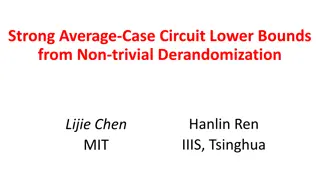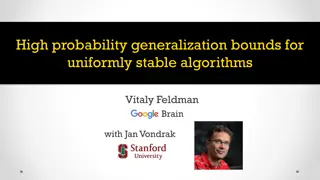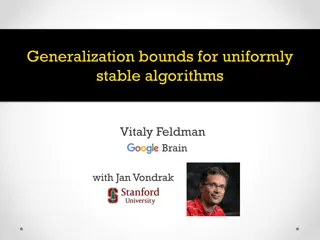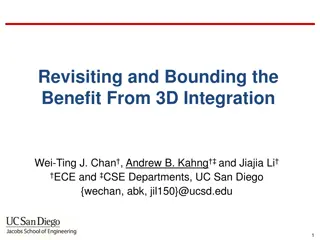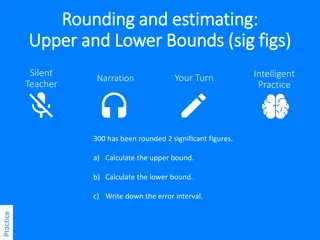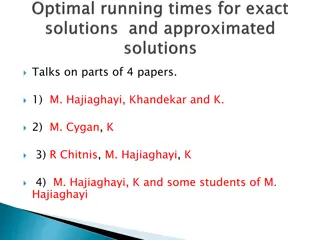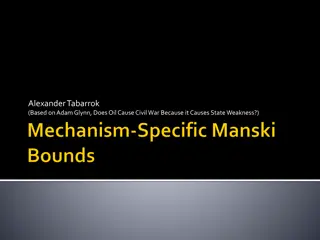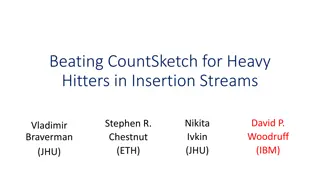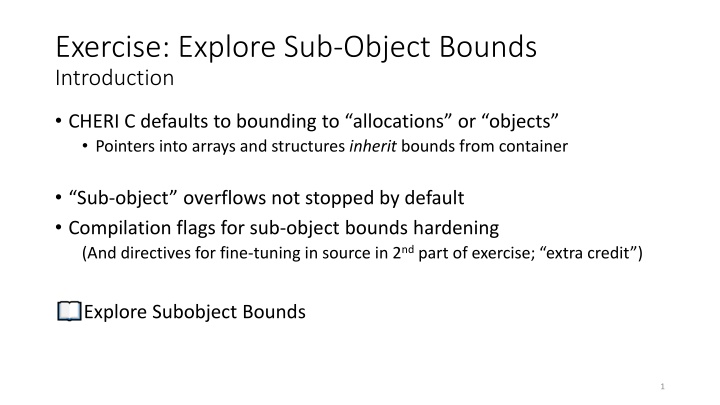
Explore Sub-Object Bounds and Overflow Prevention Techniques
Delve into understanding sub-object bounds in CHERI and sub-object overflow prevention methods. Learn about structure layout, risks of buffer overflow, CHERI sub-object hardening, and the importance of not narrowing bounds of pointers to sub-objects. Discover why sub-object bounds should be applied universally to enhance security in software development.
Download Presentation

Please find below an Image/Link to download the presentation.
The content on the website is provided AS IS for your information and personal use only. It may not be sold, licensed, or shared on other websites without obtaining consent from the author. If you encounter any issues during the download, it is possible that the publisher has removed the file from their server.
You are allowed to download the files provided on this website for personal or commercial use, subject to the condition that they are used lawfully. All files are the property of their respective owners.
The content on the website is provided AS IS for your information and personal use only. It may not be sold, licensed, or shared on other websites without obtaining consent from the author.
E N D
Presentation Transcript
Exercise: Explore Sub-Object Bounds Introduction CHERI C defaults to bounding to allocations or objects Pointers into arrays and structures inherit bounds from container Sub-object overflows not stopped by default Compilation flags for sub-object bounds hardening (And directives for fine-tuning in source in 2ndpart of exercise; extra credit ) Explore Subobject Bounds 1
Exercise: Explore Sub-Object Bounds Introduction: Structure Layout Structure representation in memory: Buffer[126] Buffer[127] i struct buf { char buffer[128]; int i; } b; Fill loop risks buffer overflow C rules this, too, undefined behavior #pragma weak fill_buf void fill_buf(char *buf, size_t len) { for (size_t i = 0; i <= len; i++) buf[i] = 'b'; } ! 2
Exercise: Sub-object Overflow Part 1 Discussion RISC-V Baseline and CHERI! b.i = c CHERI with Sub-object Hardening b.i = c b.i = b In-address space security exception Breakpoint 1, Breakpoint 1, fill_buf (buf=0x103e50 <b> fill_buf (buf=0x103e50 <b> [rwRW,0x103e50-0x103ed4] "", [rwRW,0x103e50-0x103ed0] "", len=128) len=128) Capability length: 132 bytes! Capability length: 128 bytes 3
Exercise: Sub-object Overflow Part 2 Discussion: Why isn t this the default? C spec defines offsetof() primitive and char* casts Software uses containerof() for intrusive data structures Especially popular in systems and runtime code In general, incorrect to narrow bounds of pointers to sub-objects? 4
Exercise: Sub-object Overflow Part 2 Discussion 1 3 next next next prevnp prevnp prevnp Without sub-object bounds narrowing, all caps include full structure Applying sub-object bounds everywhere: Next pointers grant access to whole intrusive list structure, Previous pointers only to next pointers Annotations can widen pointers as needed 5
Exercise: Sub-object Overflow Part 2 Discussion: Could It be the Default in the Future? Counterpoint: offsetof() / containerof() not that common. Add static asserts to containerof, enforce sub-objects non-narrowing. This is what you saw with -DUSE_CDEFS_CONTAINEROF 6

